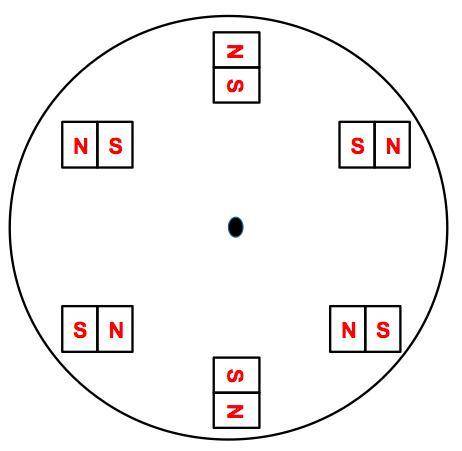
Engineering, 19.11.2020 22:50 ansley81
Scientists have collected significant amounts of data about electromagnets and how they operate in motors. Some of the collected data can be observed in the diagrams, images, and information below.
The three essential parts of an electric motor are the rotor, the fixed magnets on a rotor, and the commutator.
motor: a machine that converts electrical energy into mechanical energy
rotor: a disk that rotates in an electric motor (also in generators)
commutator: a device responsible for alternating the direction of the current in an electromagnet at the appropriate time to keep the rotor spinning
An electric current is run through the coil, which then generates a magnetic field. The magnetic field of the commutator electromagnet switches its poles at the correct interval so it attracts and repels opposite fixed magnets on the rotor to keep it in motion. The motion changes the electrical energy into mechanical energy.
Based on the evidence, write a scientific description of the relationship of electromagnets to motors. Explain how simple electric motors run.
[Make sure to have a Claim, Evidence, and reasoning separate from each other]



Answers: 1
Another question on Engineering

Engineering, 04.07.2019 18:20
Describe one experiment in which the glass transition temperature and melting temperature of a totally amorphous thermoplastic material can be determined. show the relevant experimental results in a diagram which should be properly annotated with the two temperatures clearly marked. what is likely to happen to the curve in the diagram if the amorphous polymer is replaced by a thermosetting type?
Answers: 2

Engineering, 04.07.2019 18:20
How much power could a wind turbine produce if it had the following specifications? cp = 0.45 -d=1.2kg/m3 d=50m v 5m/s
Answers: 2

Engineering, 04.07.2019 19:10
Starting wih an energy balance on a rectangular volume element, derive the one- dimensional transient heat conduction equation for a plane wall with constant thermal conductivity and no heat generation.
Answers: 1

Engineering, 04.07.2019 19:20
Acommercial grade cubical freezer, 4 m on a side, has a composite wall consisting of an exterior sheet of 5.0-mm thick plain carbon steel (kst= 60.5 w/m k), an intermediate layer of 100-mm thick polyurethane insulation (kins 0.02 w/m k), and an inner sheet of 5.0- mm thick aluminium alloy (kal polyurethane insulation and both metallic sheets are each characterized by a thermal contact resistance of r 2.5 x 104 m2 k/w. (a) what is the steady-state cooling load that must be maintained by the refrigerator under conditions for which the outer and inner surface temperatures are 25°c and -5°c, respectively? (b) for power saving purpose, which wall material should be increased/reduced in. thickness in order to reduce 50% of the cooling load found in part (a)? redesign the thickness of the proposed material. 177 w/m-k). adhesive interfaces between the q=575.93 w
Answers: 2
You know the right answer?
Scientists have collected significant amounts of data about electromagnets and how they operate in m...
Questions

Social Studies, 21.10.2020 20:01



History, 21.10.2020 20:01

Biology, 21.10.2020 20:01

Mathematics, 21.10.2020 20:01

Mathematics, 21.10.2020 20:01

Mathematics, 21.10.2020 20:01


Mathematics, 21.10.2020 20:01



Mathematics, 21.10.2020 20:01


French, 21.10.2020 20:01

Mathematics, 21.10.2020 20:01

English, 21.10.2020 20:01

Chemistry, 21.10.2020 20:01


Mathematics, 21.10.2020 20:01



